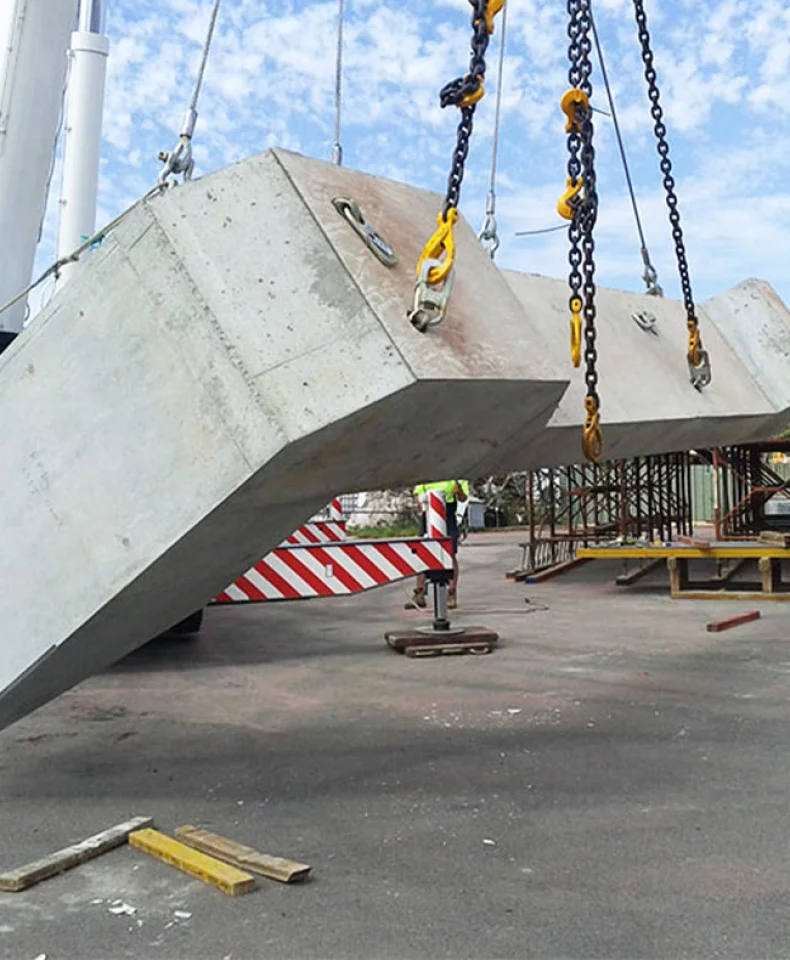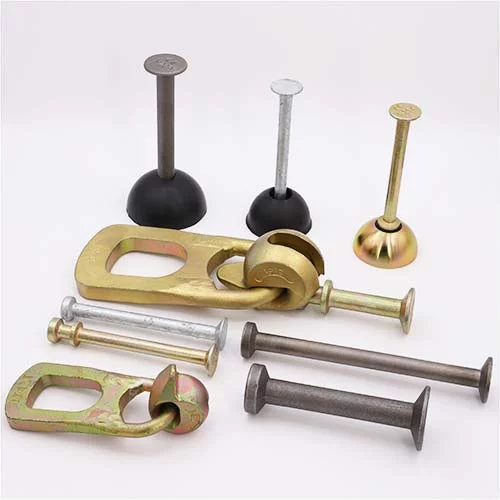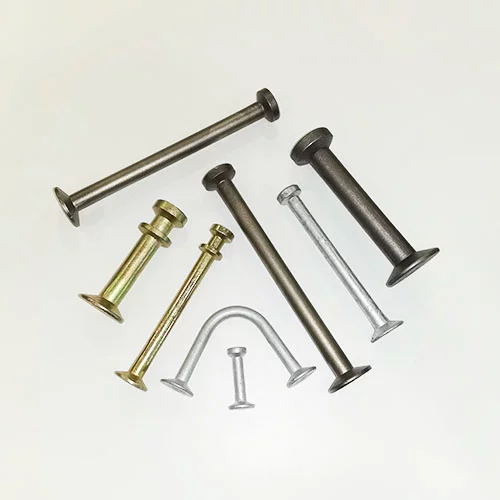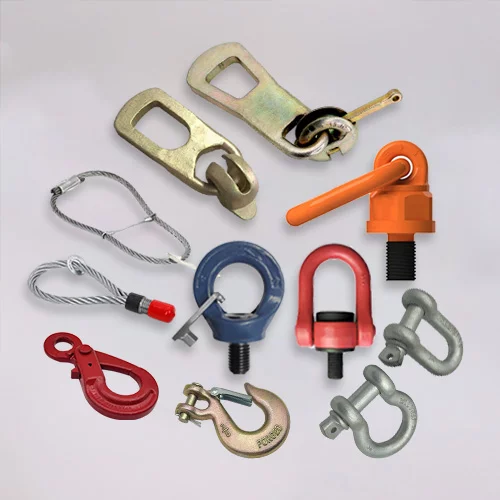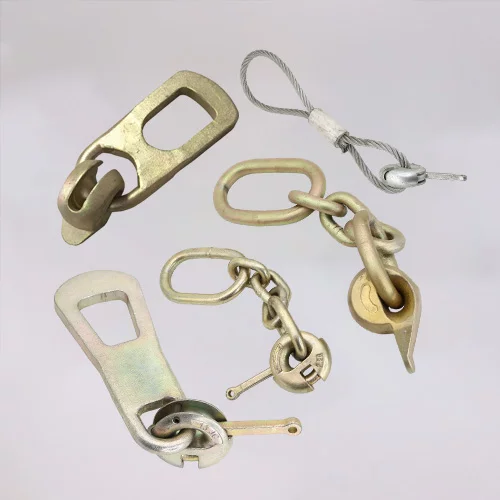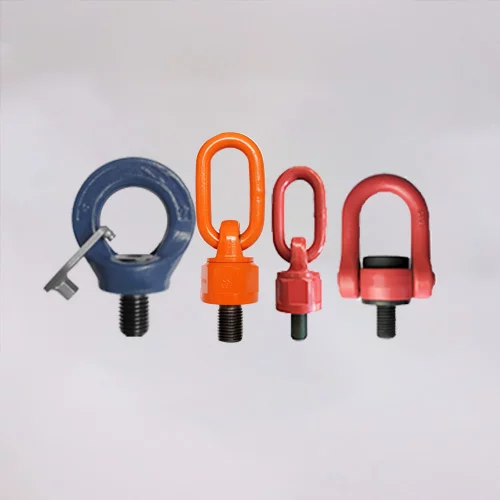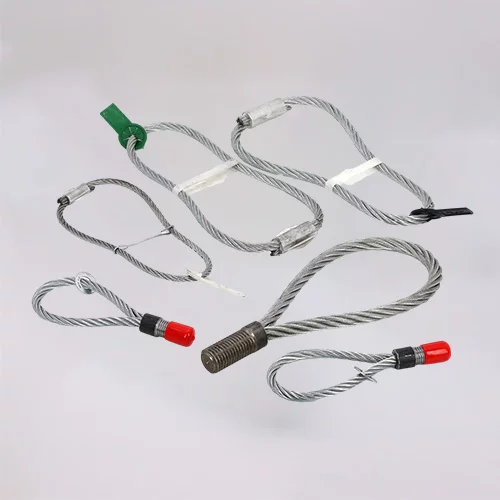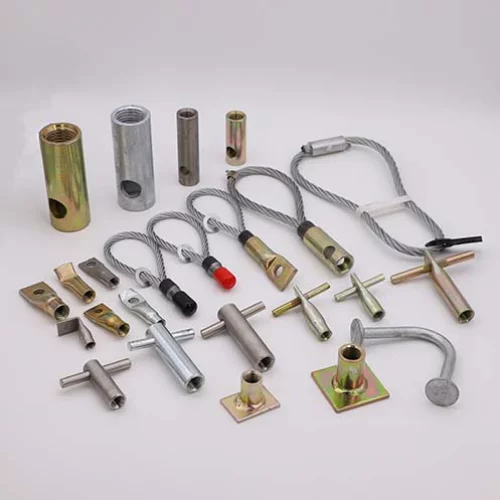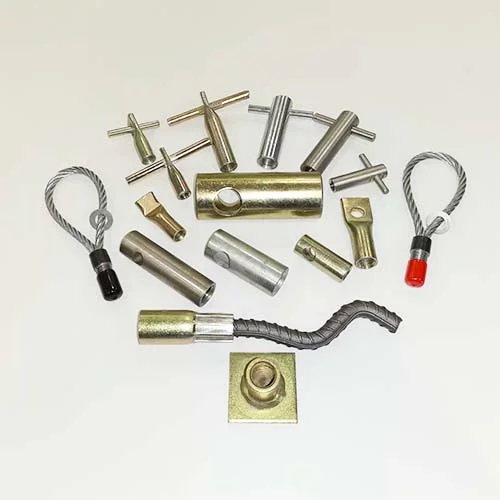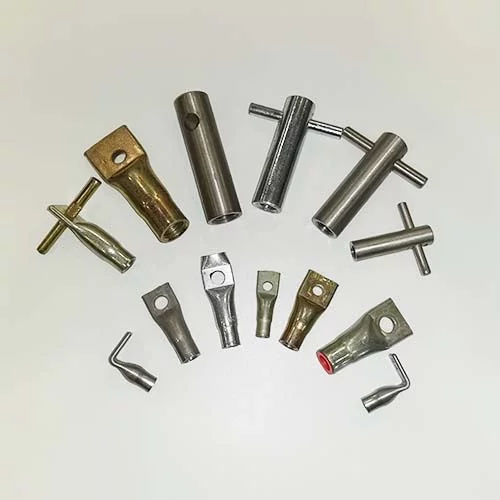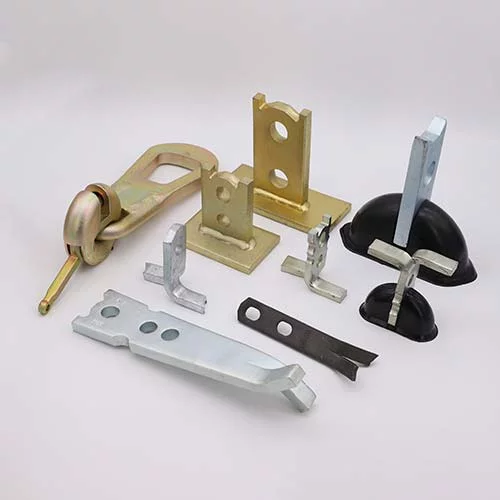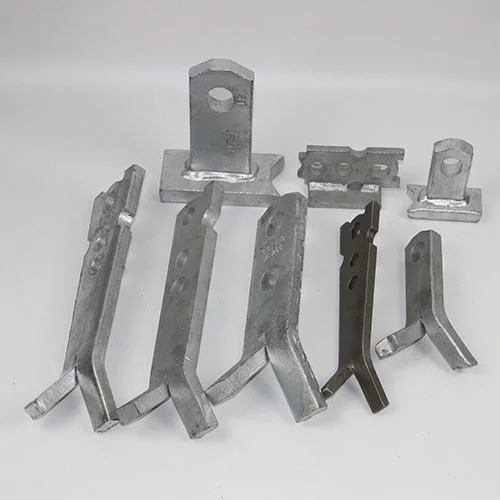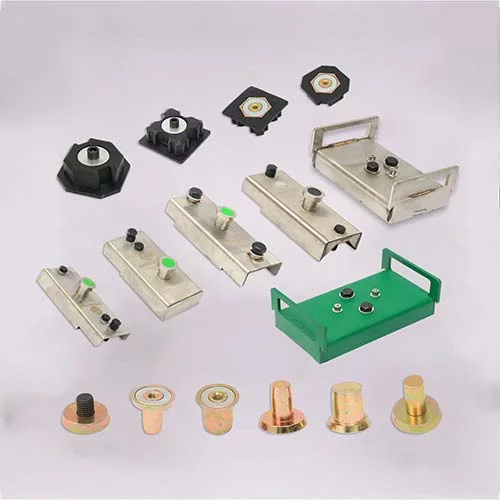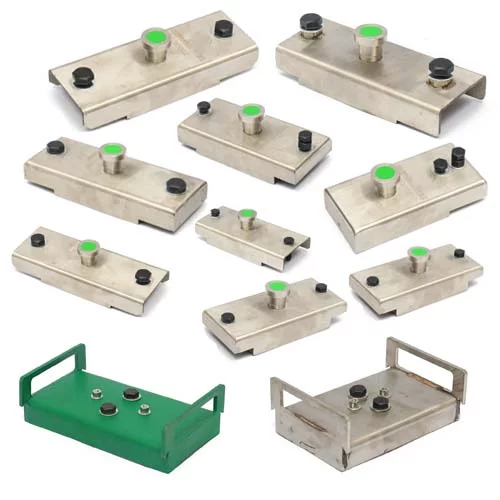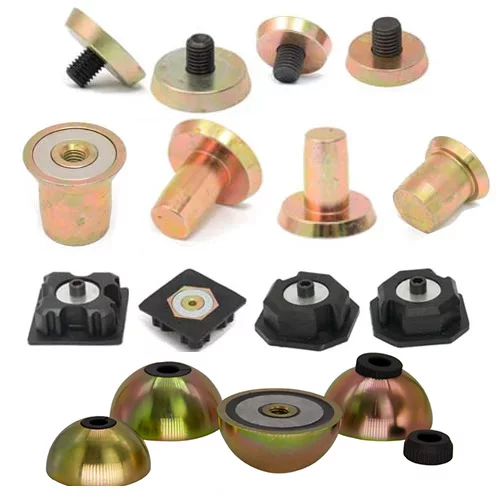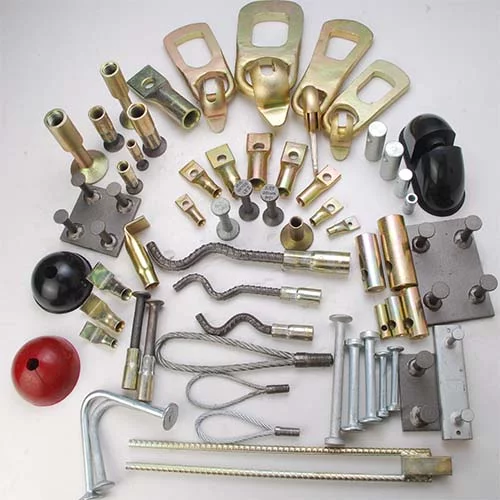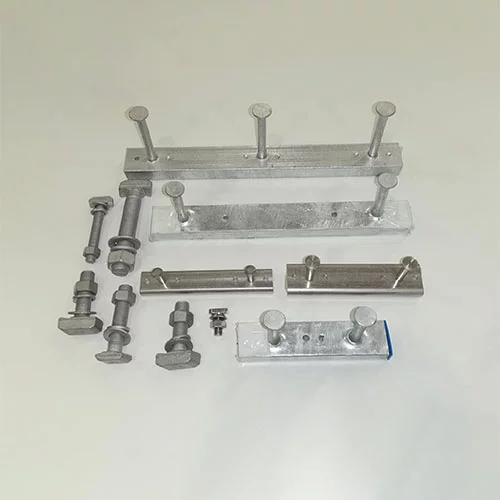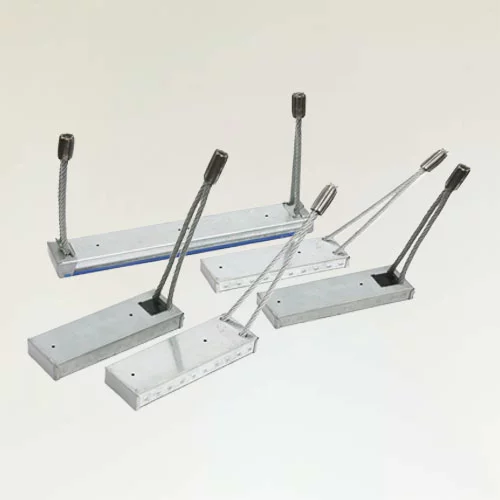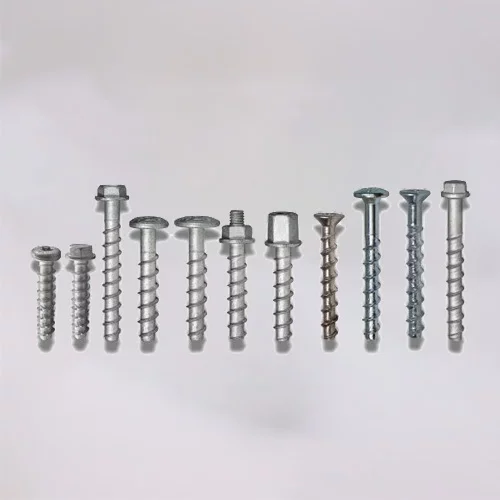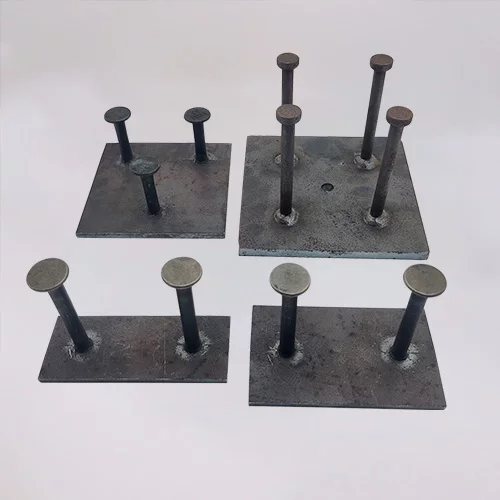What Are the Best Precast Concrete Accessories for Safe Lifting?

Precast concrete accessories—from wall panels and beams to manhole sections—have become staples in modern building projects because they can be cast off-site and then lifted into place quickly. But their weight and size mean that lifting them safely is critical. Choosing the right accessories for your lifting setup not only protects workers and the concrete parts themselves, it also keeps schedules on track and lowers costs from delays or damage. Here, we look at the key precast accessories you need for reliable lifts, how to pick them, and why working with an experienced supplier is so important. At the end, we introduce HULK Metal’s relevant offerings, drawing only on details already covered, so you get a clear picture without running into unsupported claims.
Why Safe Lifting Matters for Precast Concrete
Handling precast pieces brings challenges you won’t find with smaller elements. These items can weigh from a few hundred kilograms up to several tons, and often have uneven shapes or embedded rebar that affects the center of gravity. Key concerns include:
Load distribution: A panel lifted at the wrong points can tip or pull out its embedded fittings.
Secure connections: Temporary attachments must hold steady through hoisting, tilting, and setting down.
Site constraints: Tight jobsite layouts, overhead obstacles, or uneven ground call for flexible lifting solutions.
A dependable approach starts early: weigh and map out each element’s center of gravity, then match it with fittings tested well above the actual load. Bringing in engineers and seasoned suppliers at the design stage helps avoid surprises on install day.
Key Accessories for a Reliable Lifting System
Below are the main components you’ll use in a precast lifting setup. Each plays a specific role in keeping lifts controlled and safe.
Lifting Anchors
What they do:
These are cast or cast-in fittings that end up embedded in the concrete so you can hook or latch lifting gear onto them. They must hold firm under the dynamic forces of a lift.
Common styles:
Spherical head anchors (dog bone style): Often made of carbon steel and galvanized. Used for heavier elements like walls or manholes. Ratings typically span from around 1 ton up to over 30 tons, with testing at three to five times the working load to cover sudden forces during lifting.
Plate anchors: Flat plates welded to lifting eyes for situations needing a lower profile.
Recessed anchors: Sit below the surface until you access them later, often paired with recess formers to protect the head during finishing.
Threaded or cast-in anchors: Fit lifting loops or studs, handy when you want detachable connections.
How to choose:
Capacity vs. load: Match the anchor’s rated capacity (including its safety factor) to your heaviest possible lift.
Concrete and embedment: Ensure enough cover and the proper concrete strength so the anchor won’t pull out.
Panel thickness or shape: Thin wall panels call for low-profile options, while large blocks benefit from spherical-head designs that spread the load.
Corrosion resistance: For outdoor or harsh environments, galvanizing or plating extends service life.
Lifting Sockets and Loops
How they work together:
A lifting socket is a cast-in sleeve or receptacle in the precast piece. After curing, you screw in a lifting loop (often made from steel wire rope with a threaded ferrule), creating a removable pin point for the crane hook or clutch.
Socket varieties:
Flat-end sockets: Sit nearly flush with the surface—great for thin panels or where you don’t want big protrusions.
Tubular or solid rod sockets: Provide sturdy anchorage for heavier pieces.
Crown-foot or wavy-foot sockets: Designed so the load spreads into the surrounding concrete more evenly.
Custom or combinable sockets: When geometry is unusual or you need to adapt to a specific loop type.
Lifting loops:
Made from high-strength steel rope and forged ferrules, often with CE marking for compliance. They thread into the sockets and can be removed and reused.
Always double-check thread size and form so loops and sockets match exactly—any mismatch undermines safety.
Benefits:
Flexibility: You store loops separately; only the sockets stay cast in place.
Inspection and replacement: If a loop shows wear, replace it without touching the precast unit.
Less interference in formwork: Flat sockets reduce clutter when casting panels.
Lifting Clutches and Connectors
Their role:
Clutches or connectors link the embedded anchor or loop to the crane’s hook or spreader beam. They often allow rotation or pivoting so you can lift a panel flat and then tilt it into its final position.
Typical options:
Ring clutch: Fits over a spreading-pin or anchor head and has a ring that pivots, easing tilting or rotation under load.
Spherical lifting clutch: Matches spherical-head anchors, letting the load align itself and reducing side loading on the anchor.
Eye anchor clutch: A simpler eye fitting for mostly vertical lifts.
What to watch for:
Rotation/pivot features: If you need to change orientation en route, pick a clutch designed to move smoothly.
Load rating: It must meet or exceed the anchor’s working load, including the usual safety margin.
Certifications: CE marking or equivalent shows it has passed relevant tests.
Maintenance: Choose a design meant for repeated use, with straightforward inspection or lubrication if needed.
Using the wrong clutch can let a panel swing unpredictably or overstress the anchor, so match them carefully to your anchors and lifting loops.
Magnetic Fixing Systems
Why magnets help:
Strong magnets can hold formwork pieces or recess formers in place without mechanical clamps. They speed up positioning and removal, especially when you reuse the same setups repeatedly.
Typical uses:
Holding recess formers for anchor heads before pouring.
Clamping light formwork panels temporarily.
Locating small embeds or channels accurately before casting.
Key points:
Use magnets rated for the weight or pull-off forces expected, including any vibration or movement during pouring.
Check temperature limits—concrete heat during curing can reduce magnetic pull temporarily.
Inspect housings for damage or corrosion; a chipped magnet or dented casing can weaken performance.
When used properly, magnets cut down labor time and help position accessories exactly where they belong, supporting safer lifts later.
Recess Formers
Purpose:
To leave a pocket around an embedded anchor head or socket opening. After the concrete cures, you remove the former and have clear access to insert lifting gear.
Common types:
Magnetic steel formers: Stick to steel formwork for precise alignment.
Rubber or plastic formers: Lighter and easy to handle; they may need simple clamps or adhesive to hold them in place.
Custom shapes: For unusual anchor heads or when you need integrated details (like drainage features around the anchor).
Advantages:
Accurate placement: Makes sure the lifting hardware lines up correctly, avoiding sideways forces.
Protection: Shields anchor heads from damage during finishing steps.
Efficiency: Simplifies removal after casting, so you can move on to lifting without extra chiseling or cleanup.
Properly positioned recess formers are a small step that pays off by preventing misaligned lifts later.
Customized Solutions
Some precast pieces—very long beams, complex façade units, heavy columns—won’t suit off-the-shelf parts alone. In those cases, you might need:
Spreader beams or frames: To share the load across several anchors so no single fitting is overstressed.
Special lifting brackets: Welded plates or bolted fixtures embedded during casting, tailored to the piece’s shape.
Adjustable jigs: On-site gear that lets you tweak lift points based on actual conditions or last-minute design tweaks.
Unusual anchor designs: For extremely thin panels or shapes that don’t accommodate standard heads.
Early collaboration with engineers and a supplier experienced in custom precast lifting means you avoid “make-do” solutions that can be unsafe or costly to fix later.
How to Pick the Right Accessories
Rather than guessing, follow a clear process:
Study each element:
Calculate its weight, center of gravity, and reinforcement layout so you know where the lift points must be.
Note thickness and any thin edges—these often limit anchor or socket choices.
Assess site and equipment:
Confirm crane capacity and reach versus the heaviest piece.
Examine access routes, overhead obstacles, ground conditions, and weather factors (wind can matter with large panels).
Verify standards and testing:
Select accessories with certificates and test records showing at least three times the working load, preferably up to five times for extra margin.
Make sure the manufacturer follows a quality system (e.g., ISO 9001) and engages third-party inspectors (TUV, SGS).
Consider materials and finishes:
For outdoor or corrosive environments, insist on galvanizing or other protective plating.
Choose steel grades suited to the load and environment.
Think about handling and upkeep:
Lifting loops and sockets that connect quickly save time.
Reusable magnets and formers streamline repeated casting cycles.
Pick parts designed for easy inspection or non-destructive testing so you spot wear before it becomes a problem.
Tap supplier know-how:
A partner who helps with load calculations, mock-ups, or sample testing adds confidence.
After-sales support—spare parts, advice on storage or maintenance—keeps your lifting gear ready over the long haul.
Following these steps ensures your lifting system matches the real demands of your project rather than relying on generic parts that might not fit.
The Value of a Trusted Manufacturer
Cheap or untested accessories carry big risks: a dropped panel, damaged concrete, injured workers, and expensive downtime. By contrast, a reputable maker delivers:
Consistent quality: Controlled processes (forging, machining, heat treatment) and thorough inspections mean each anchor, socket, or clutch meets its rating.
Full traceability: Test reports and certificates give you documentation for audits or safety reviews.
Expert advice: Seasoned teams can guide you on selecting the right anchors, sockets, magnets, formers, or custom fixtures for your specific elements.
Customization when needed: If your piece is out of the ordinary, they can design and test a suitable solution.
Ongoing support: From helping with inspections and replacements to advising on storage and handling, they stay involved after the sale.
Reliable logistics: Established supply chains for raw materials, packaging, and shipping cut down lead times and often reduce costs.
Choosing quality accessories from a partner you trust pays back in fewer lift hiccups, smoother schedules, and greater peace of mind that nothing is left to chance.
Why HULK Metal Fits the Bill
Based on the details we already covered, HULK Metal offers a comprehensive lineup and backing for precast lifting:
Product range:
Anchors: Spherical-head anchors rated from around 1 up to 32 tons (with three- to five-times safety testing), plate and recessed types for walls, culverts, manholes, and other precast units.
Sockets & Loops: Flat-end, tubular, crown-foot, and wavy-foot sockets paired with CE-marked lifting loops made from high-strength wire rope and forged ferrules.
Clutches & Connectors: Ring clutches, spherical lifting clutches, hoist rings, hooks—all designed for smooth rotation or pivoting under load.
Magnets & Formers: Shuttering magnets, magnetic steel formers, rubber/plastic formers for accurate anchor placement in casting.
Extras: Cast-in channels, wire loop boxes, spread anchors, embedded plates, and other accessories that round out a full lifting system.
Quality and testing:
Production under ISO 9001 standards, advanced machining and forging, plus random inspections and breaking tests. Third-party checks by bodies like TUV or SGS back up the ratings.
Galvanizing and plating options for corrosion resistance.
Technical support and customization:
Engineering help with load calculations, anchor placement, and tailor-made solutions for unusual shapes or heavy elements.
OEM services based on customer drawings, advising on steel grades, forging or heat treatment methods, and surface finishes.
End-to-end service:
Integrated supply chain: raw materials, production, quality control, packaging, and freight advice.
After-sales care: help with troubleshooting, spare parts, inspection guidance, and storage recommendations.
Transparency: Options for online factory tours or inspections before large orders.
Competitive edge:
Volume discounts for bulk orders.
Streamlined workflows to shorten lead times.
Logistics team that finds efficient shipping routes.
Safety focus:
Products tested at multiple times the working load, rotation-capable clutches to manage dynamic forces, and attention to features that cut labor effort and improve reliability.
If you need dependable lifting accessories—whether standard panels or one-off complex pieces—HULK Metal’s expertise and full support help ensure each lift goes smoothly and safely.
Safe handling of precast concrete hinges on choosing accessories that match each element’s weight, shape, and site conditions. Lifting anchors, sockets, loops, clutches, magnets, formers, and any custom fixtures all have to work together, and each must be properly rated, placed, and tested. Partnering with a supplier who brings quality control, documented testing, engineering know-how, and after-sales support reduces risk and keeps projects on schedule. HULK Metal’s range and services, as described above, offer a solid foundation for reliable lifts of precast components. When you plan lifts carefully and use proven accessories, you protect people, protect materials, and keep construction moving efficiently.
Article Navigation
PRECAST CONCRETE ACCESSORIES
Other Precast Concrete Accessories You Might Want to Know
You can click to learn more about HULK Metal precast concrete accessories such as lifting anchors, precast sockets, spread anchors, shuttering magnets, cast-in channels, wire loop boxes, and other precast concrete accessories you might want to know.
